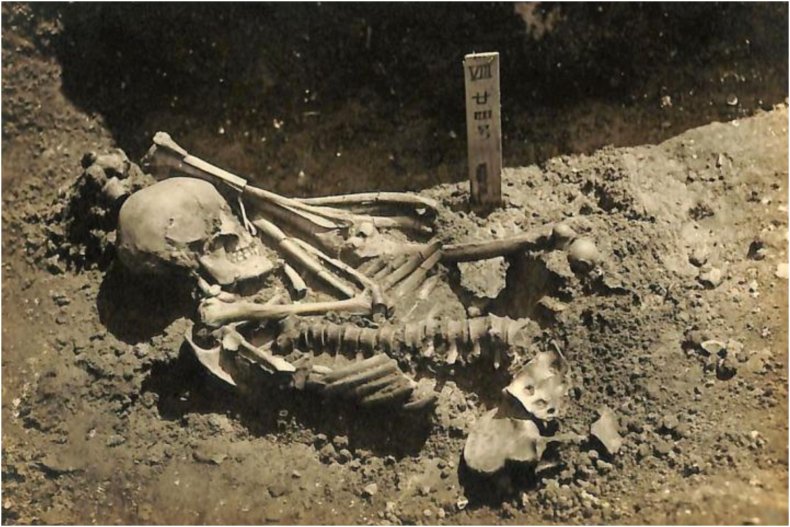3,000-Year-Old Remains Believed to Be Oldest Known Victim of Shark Attack
Shark attacks aren't common—in spite of the plethora of pop culture and media depictions of them—but the phenomenon is certainly not a new one. Researchers at the University of Oxford have made that clear after uncovering the remains of a 3,000-year-old skeleton that they believe is the oldest known example of a fatal shark attack on a human.
The findings, published in The Journal of Archaeological Science, report that the adult male's remains were found "at the Tsukumo site near Japan's Seto Inland Sea," a location "where modern shark attacks have been reported."
The victim, known as Tsukumo No. 24, was covered with "at least 790" injuries that matched those found in cases of shark attacks, "including deep, incised bone gouges, punctures, cuts with overlapping striations and perimortem blunt force fractures."

Explained researchers J. Alyssa White and professor Rick Schulting in a press release on their findings: "We were initially flummoxed by what could have caused at least 790 deep, serrated injuries to this man."
"The injuries were mainly confined to the arms, legs, and front of the chest and abdomen," they added. "Through a process of elimination, we ruled out human conflict and more commonly reported animal predators or scavengers."
The chances of uncovering an archaeological shark attack case are "incredibly small," said White in a statement to Newsweek. "You have to think of all the different factors other than the rarity of a shark attack to really appreciate it. Not only did there have to be an attack, but Tsukumo No. 24's body had to be recovered, buried in an environment that helped preserve his bones (i.e., a shell-mound cemetery that protected the bones from the relatively acidic soil in Japan), found by researchers, documented thoroughly at the time of excavation, held at Kyoto University until today, and then examined by experts in the field."
While "shark attacks are most certainly not the subject of [her] doctoral thesis," which looks at "interpersonal violence in the prehistoric Japanese archipelago," White added that "it has been fascinating applying that expertise to something outside of [her] typical work."
According to the study, the team used a 3D model to visualize Tsukumo No. 24's injuries and concluded that he was alive at the time of the attack, rather than scavenged by the shark. Additionally, based on the placement and appearance of teeth marks, they believe that the species of the shark involved was either a Great White or a tiger shark.
Tsukumo No. 24, who died between 1370 and 1010 BC, was also missing his left hand, potentially due to attempted self-defense. "Given the injuries, he was clearly the victim of a shark attack," explained the duo in the press release. "The man may well have been fishing with companions at the time, since he was recovered quickly."
While remarkable, the case is a rarity: As the researchers noted in their paper, "modern shark attacks are uncommon and archaeological examples are even rarer." That means that, for the average swimmer, there's not too much to worry about.
According to the National Ocean Service, "most sharks are not dangerous to humans" because "people are not part of their natural diet." They add that "only about a dozen of the more than 300 species of sharks have been involved in attacks on humans," noting that "sharks have more to fear from humans than we do of them."

